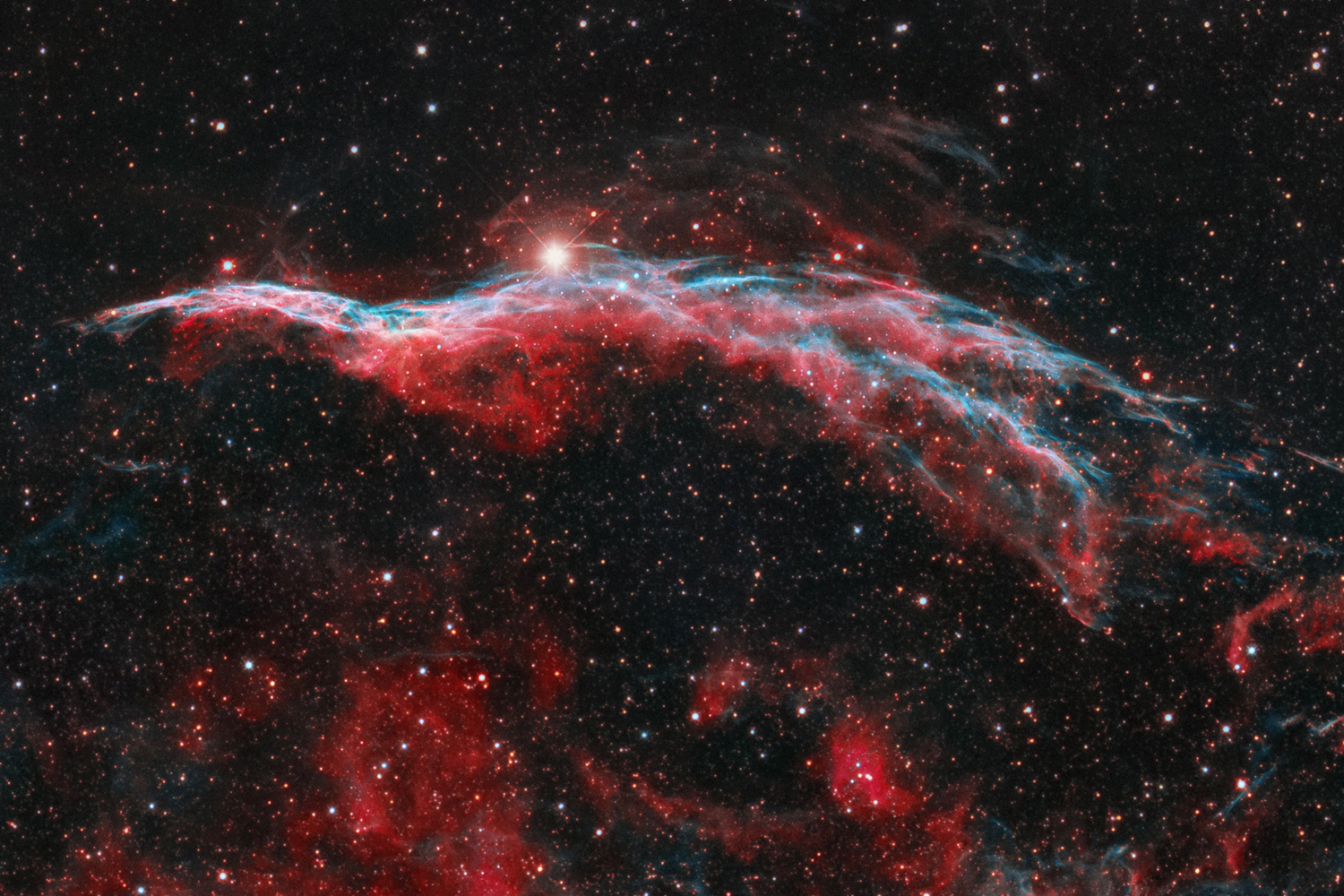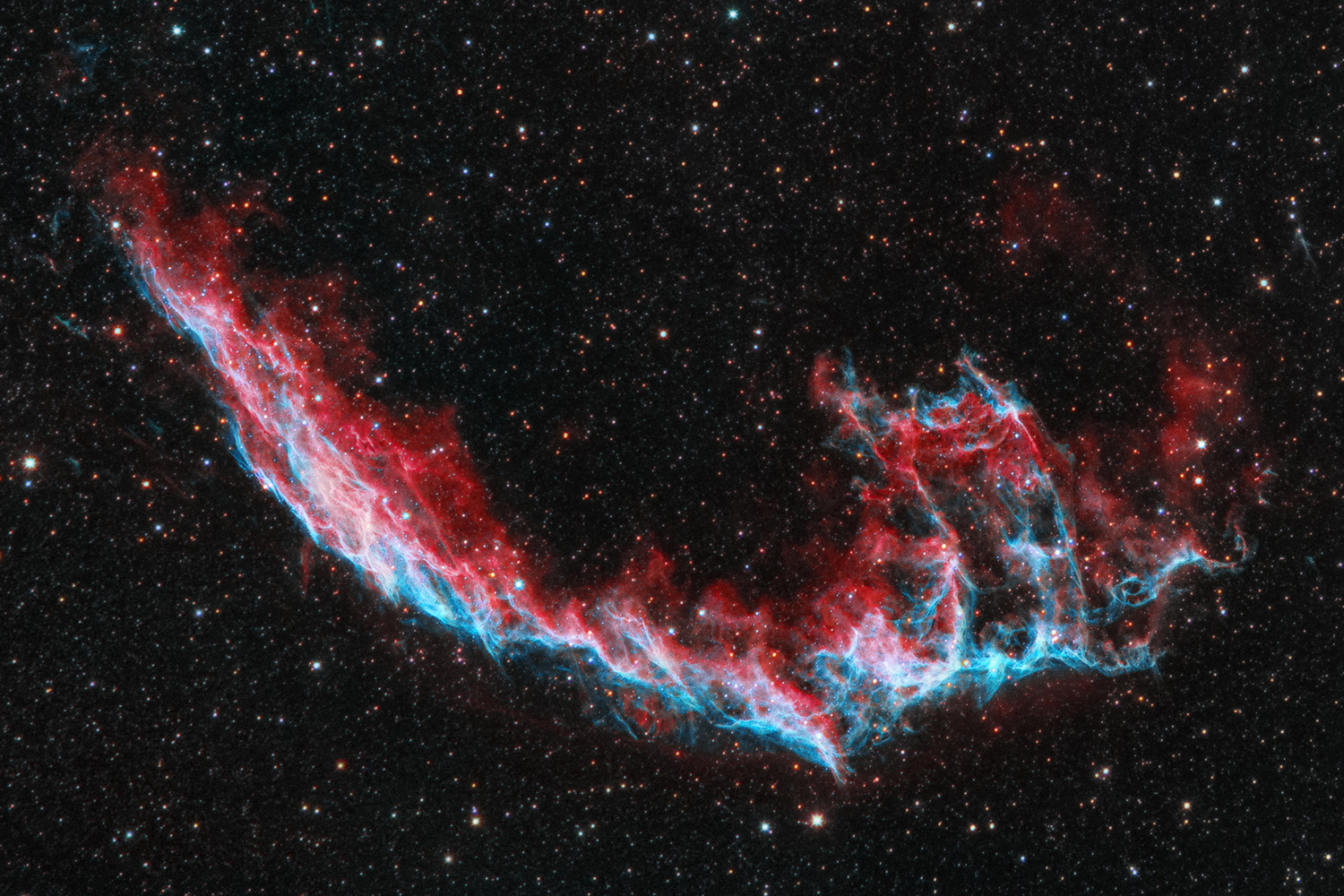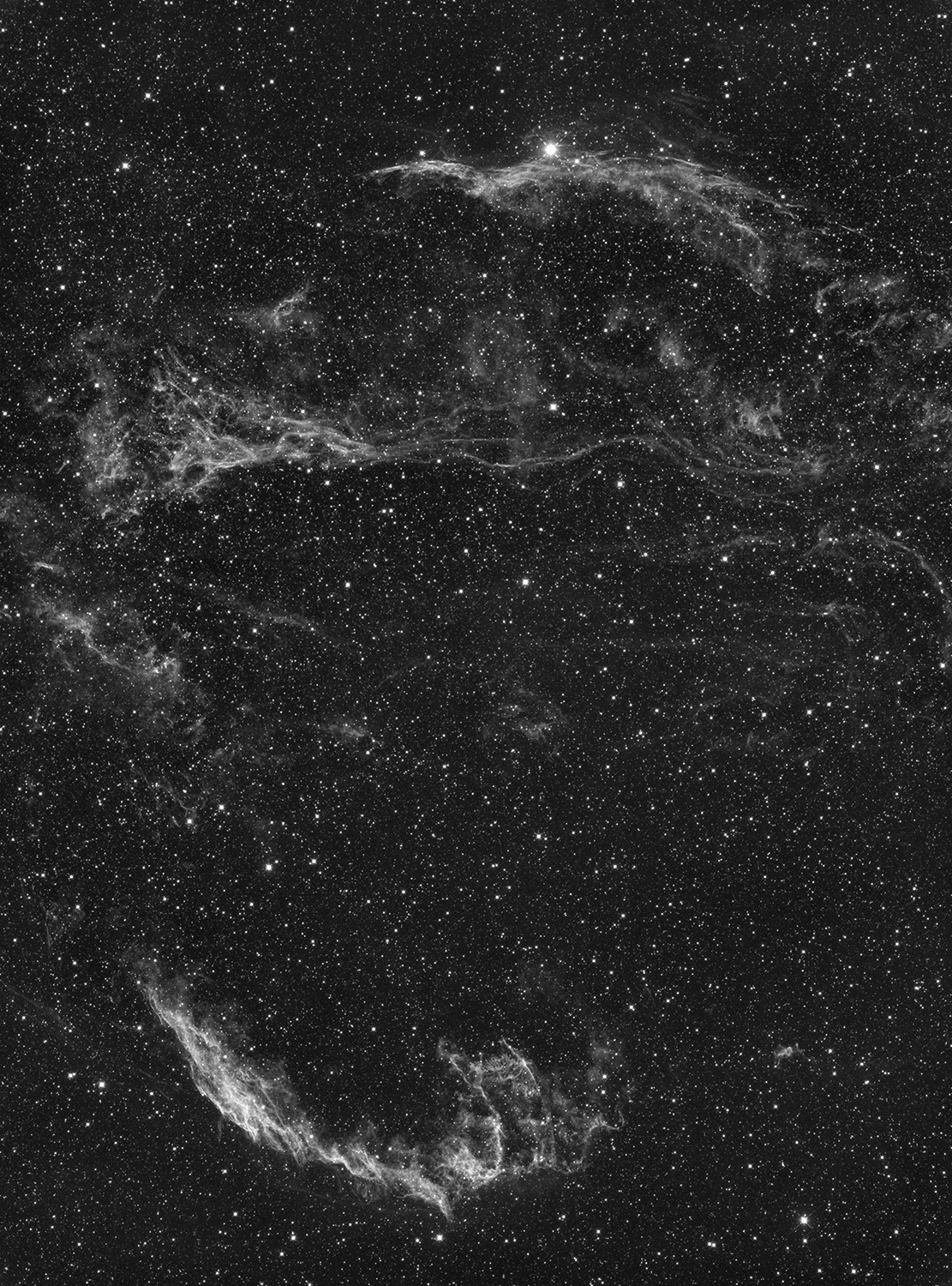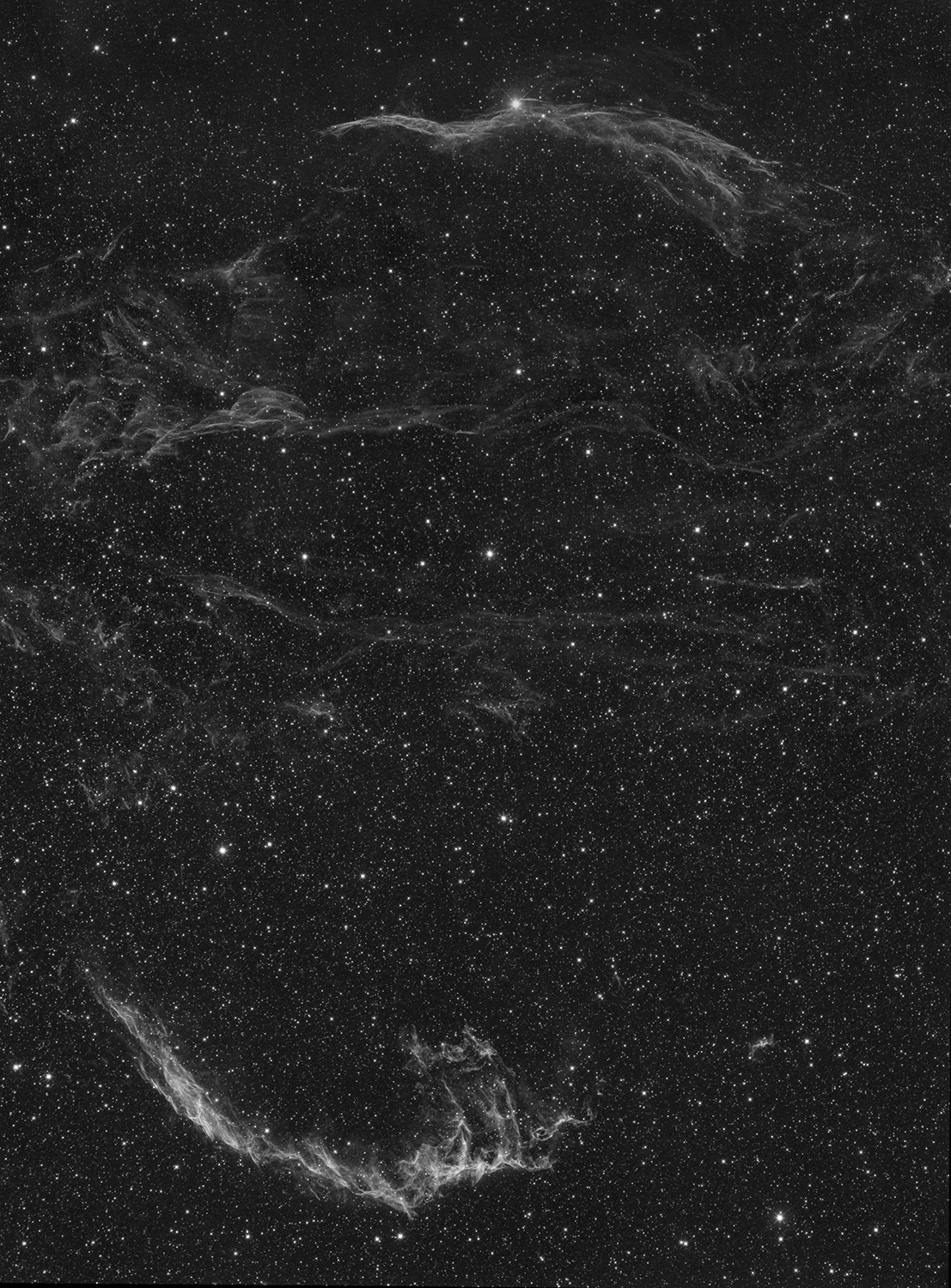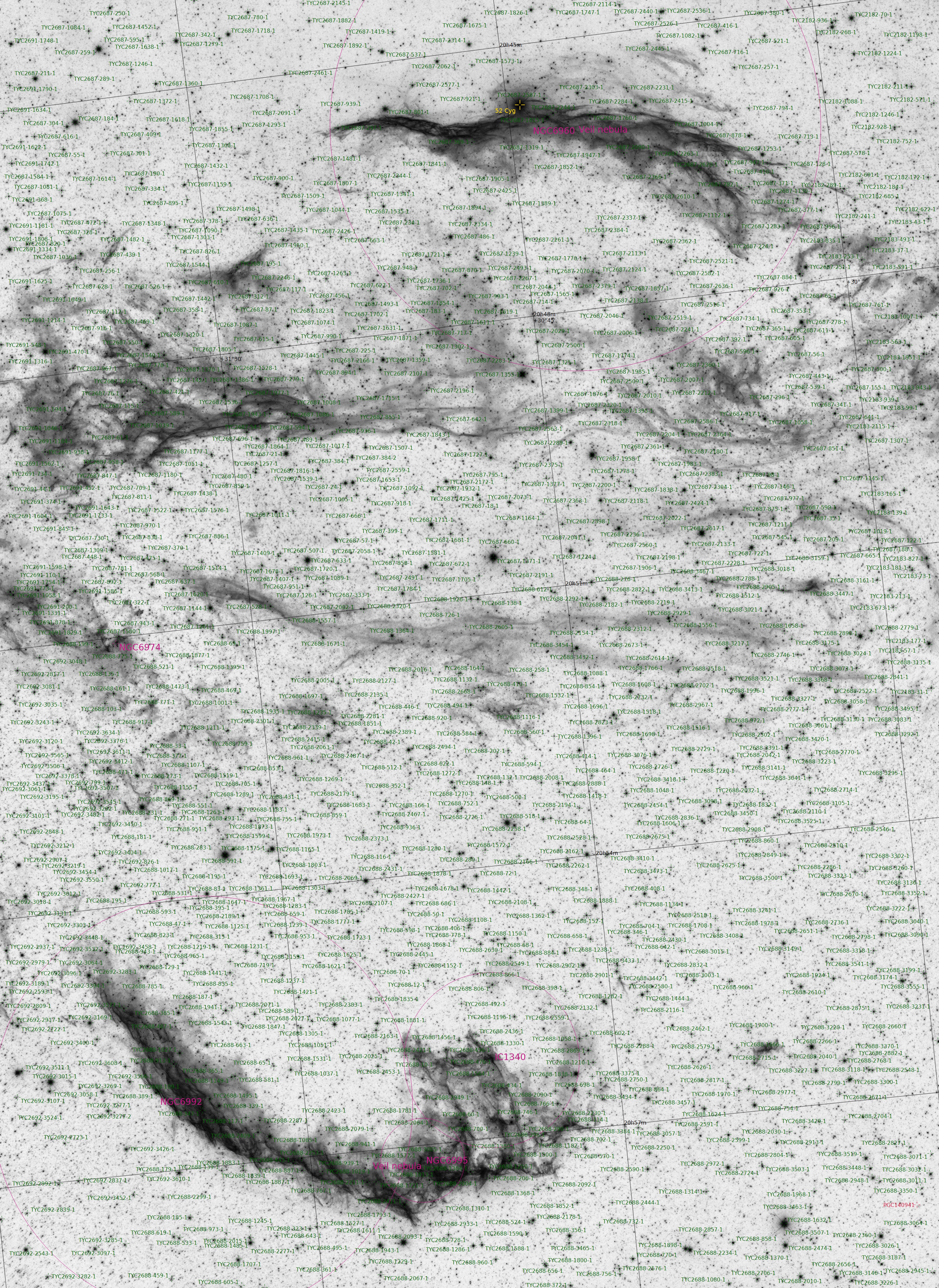
NGC 6969 & NGC 6992 - The Veil Nebula
Sometime between 10,000 and 20,000 years ago, a massive supernova explosion occurred in the constellation Swan (lat.: Cygnus). A star about 2,400 light years away with twenty times the mass of our Sun reached the end of its life. In its interior it ran out of the material with which it generated energy by fusing atomic nuclei. This energy was just enough to balance the enormous gravitational pressure of its own mass. Without a supply of energy, the star imploded under its own weight. This process is so violent that in an explosion, large parts of the star are hurled into the universe. This explosion continues to this day. The stellar matter hits the thin interstellar gas at about 350 kilometers per second. The interaction of the interstellar matter with the impact front produces delicate filaments, as can be seen in the photographs.
The supernova explosion has now expanded to a diameter of 60 light-years and covers a range of 36 full moon diameters in the sky in the constellation of the Swan. The supernova remnant carries with it all the chemical elements produced in the giant star by nuclear fusion over millions of years, enriching interstellar matter with atoms such as carbon, oxygen and nitrogen. Without the activity and explosion of giant stars, our universe would consist almost entirely of hydrogen and helium - far too little chemical diversity to support life.
-
Category
Supernova Remnant
-
Coordinates
RA 20h 45m 38s
DEC +30° 42' 30" -
Distance
2400 ly
-
Apparent Mag
7 mag
-
Equipment
150mm f/2.8 Hypergraph
Skywatcher AZ-EQ 6
QHY-9S mono CCD
Canon 600Da -
Exposure
Hα: 120 x 300 s
OIII: 120 x 300 s
RGB: 12 x 300 s
Total Integration: 21 h -
Publication Date
01.09.2020

